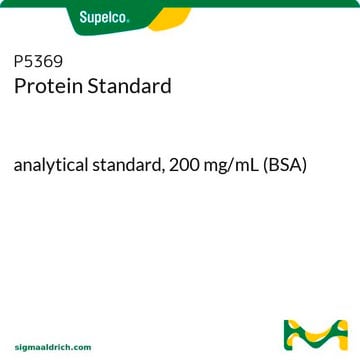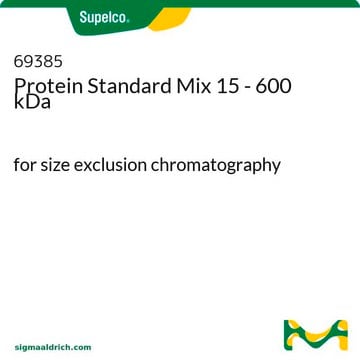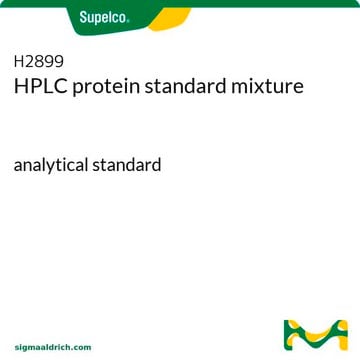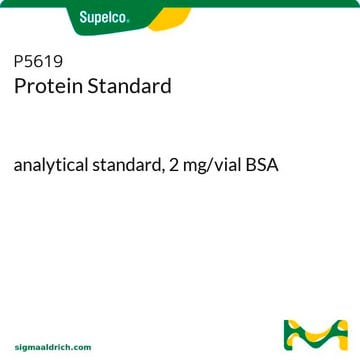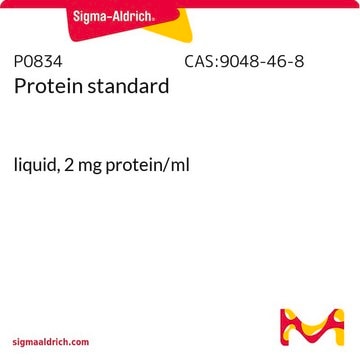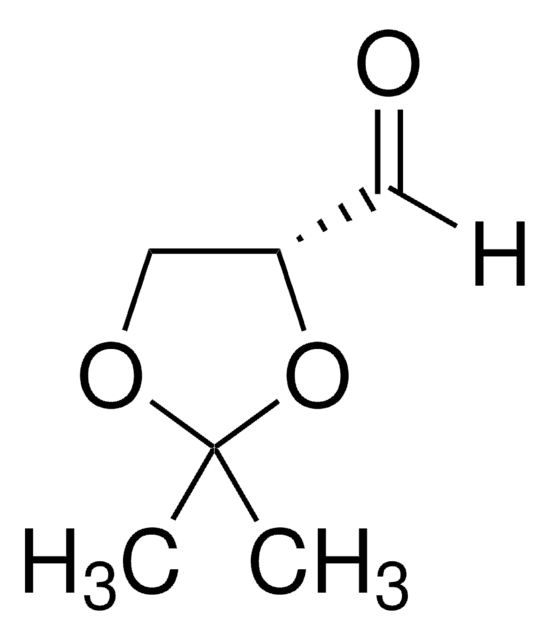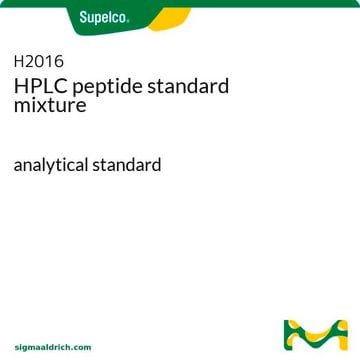P8994
Protein Standard, 80 mg/ml BSA
analytical standard
Iniciar sesiónpara Ver la Fijación de precios por contrato y de la organización
About This Item
Código UNSPSC:
85151701
Productos recomendados
grado
analytical standard
Nivel de calidad
clases químicas de analitos
amino acids, peptides, proteins
técnicas
gel permeation chromatography (GPC): suitable
aplicaciones
food and beverages
Formato
neat
temp. de almacenamiento
2-8°C
Código de clase de almacenamiento
12 - Non Combustible Liquids
Clase de riesgo para el agua (WGK)
WGK 2
Punto de inflamabilidad (°F)
Not applicable
Punto de inflamabilidad (°C)
Not applicable
Elija entre una de las versiones más recientes:
Certificados de análisis (COA)
Lot/Batch Number
¿No ve la versión correcta?
Si necesita una versión concreta, puede buscar un certificado específico por el número de lote.
¿Ya tiene este producto?
Encuentre la documentación para los productos que ha comprado recientemente en la Biblioteca de documentos.
Ganary Dabiri et al.
The Journal of investigative dermatology, 128(10), 2518-2525 (2008-04-11)
Following severe traumatic or thermal injury to the dermis, hypertrophic scars (HTSs) often develop in humans. These scar fibroblasts (hypertrophic scar fibroblasts (HTSFs)) retain the myofibroblast phenotype persistently, rather than transiently as in acute wounds. These pathogenic myofibroblasts constitutively express
Guowu Hu et al.
The Journal of clinical investigation, 118(3), 1186-1197 (2008-02-09)
Autophagy is a process by which cells recycle cytoplasm and defective organelles during stress situations such as nutrient starvation. It can also be used by host cells as an immune defense mechanism to eliminate infectious pathogens. Here we describe the
Nabanita De et al.
PLoS biology, 6(3), e67-e67 (2008-03-28)
Environmental signals that trigger bacterial pathogenesis and biofilm formation are mediated by changes in the level of cyclic dimeric guanosine monophosphate (c-di-GMP), a unique eubacterial second messenger. Tight regulation of cellular c-di-GMP concentration is governed by diguanylate cyclases and phosphodiesterases
Umut Gazi et al.
The Journal of biological chemistry, 286(10), 7822-7829 (2011-01-06)
The mannose receptor (MR) is an endocytic type I membrane molecule with a broad ligand specificity that is involved in both hemostasis and pathogen recognition. Membrane-anchored MR is cleaved by a metalloproteinase into functional soluble MR (sMR) composed of the
Nuestro equipo de científicos tiene experiencia en todas las áreas de investigación: Ciencias de la vida, Ciencia de los materiales, Síntesis química, Cromatografía, Analítica y muchas otras.
Póngase en contacto con el Servicio técnico